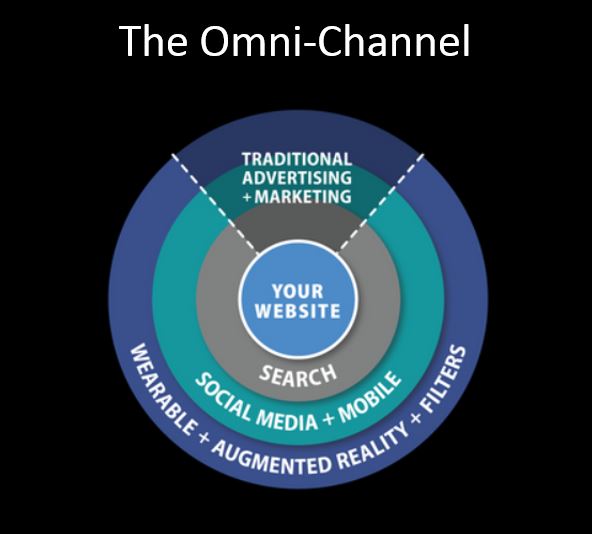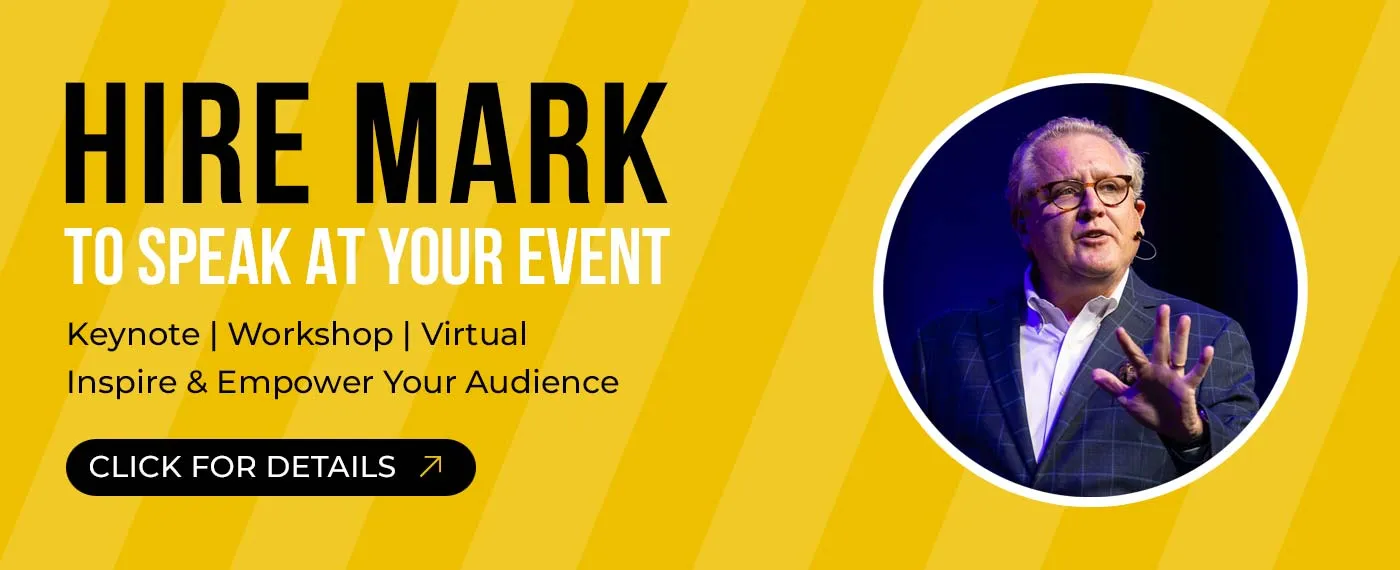
If you’re like me, you have probably seen a new buzzword creeping into the online marketing conversations — “OmniChannel marketing.”
I like this characterization from John Bowden, Senior VP of Customer Care at Time Warner Cable as it appeared in a recent Marketo post:
“Multi-channel is an operational view – how you allow the customer to complete transactions in each channel. OmniChannel, however, is viewing the experience through the eyes of your customer, orchestrating the customer experience across all channels so that it is seamless, integrated, and consistent. OmniChannel anticipates that customers may start in one channel and move to another as they progress to a resolution. Making these complex ‘hand-offs’ between channels must be fluid for the customer. Simply put, OmniChannel is multi-channel done right!”
If you read this carefully, you might be wondering, “uh … what is really new here?” Haven’t we always wanted to do a good job with our multi-channel marketing?
Why is this hot now?
My own theory is that this is a hot topic because earlier this year Wal-Mart asked its suppliers to develop OmniChannel strategies. In other words, thousands of companies are in a frenzy to figure this out. You never, ever ignore Wal-Mart. This is a rule.
Add to that a study by Retail Systems Research indicating that 47% of retailers surveyed indicate that multi-channel customers are significantly more profitable than single channel customers – a rise from 38% in 2012 and a sharp rise from 28% in 2009.
We are creating increasingly complex layers of digital connection between our companies and our customers. Mastering these layers (and integrating traditional advertising) through a uniform and consistent communication strategy represents the OmniChannel challenge.
The layers of the OmniChannel
With the creation of our first company websites, we bought a one-way ticket to creating the first, permanent digital relationships with our customers. We began to condition consumers that they could expect a 24 x 7 buying and service experience. The business emphasis was on establishing a PRESENCE.
The second digital layer emerged just a few years later and was enabled by Google. A new $30 billion search industry was born as companies focused on DISCOVERY. Now that we had websites, we had to be found!
A third layer emerged around 2007 as “chat rooms” bloomed into social networks. For many people, this became the preferred way to communicate, discover products and services, and connect with customer service. Time on websites went down, time on social sites exploded, as did a host of new advertising, commerce, and service options.
Mobile began to pick up steam at the same time, creating the greatest new commerce channel since the shopping mall. Combined with social media, mobile presented an unprecedented opportunity to focus on UTILITY –helping people whenever and wherever they were with relevant and helpful content.
Next? The future belongs to wearable technology, augmented reality, and advanced filters to help us deal with overwhelming information density, a fourth digital layer.
As the illustration depicts, traditional marketing, advertising and merchandising co-exists with these layers, and increasingly pervades them.
Devin Wenig, the president of eBay Marketplaces described it this way in a McKinsey interview: “I think e-commerce for many years was an interesting trend, but … today we don’t even know what e-commerce means. Everything has come together, the on- and the offline. Now, every merchant, every retailer must have an OmniChannel strategy or they won’t survive. That’s very different than even just 24 months ago.”
10 Implications of the OmniChannel
If you think this through, and I hope you do, there are some important implications of this integration.
1. The best miners win
Customers are going to leave a data trail on every level. The companies that can mine this stream will create powerful competitive advantage. That’s why, increasingly, marketing = math. Analytics is the key to the kingdom. For many retailers, data analysis may present the ONLY competitive advantage in a world of instant price comparisons and buy now buttons.
2. New resources, new skills
Not every customer will engage with you on every layer. That means your channel strategies are going to multiply, which means you need RESOURCES. Eighty percent of CMO’s say they are failing at OmniChannel marketing due to a lack of appropriate resources.
These new resources will also require a new outlook and new skills. Devin Wenig of eBay put it this way:
“Building engaging experiences across channels is incredibly important. Many retailers have spent their entire lives thinking about how to build an engaging experience in one channel, usually a store. But now, understanding how to connect with your core customers across every way they want to connect — not the way you want them to connect but the way they want to connect with you — is a different skill.”
“It requires design and product management. It requires understanding how to market in a digital world. There are still many instances that I see where it is old-school marketing. It’s still about major TV campaigns, get people into the stores. That’s still important, and that’s not going to go away.
“But understanding how to engage in a world of exploding social networks, how to use search, how to optimize, and how to engage—very different skills. I think that is going to become a core part of the playbook for retailers and merchants of all sizes around the world.”
3. Distinctive ubiquity
Standing out in an increasingly complex and cluttered world across all of these channels is not going to be easy — or cheap. If the experiences in each channel are not uniquely helpful, you risk annoying customers with repetitive ubiquity everywhere they turn.
While “multi-channel” may be losing its luster as the buzzword of choice, in fact you need to connect with consistent, but different, approaches by channel.
Your goal needs to be “Distinctive Ubiquity.”
4. Measurement wins
Like social media in general, measurement can be difficult. Ironically, the companies most likely to succeed and fund new initiatives are the ones best able to measure success. According to a recent study, 85% of CMOs are doing NO measurement of cross-channel efforts.
In this rudderless environment, how do you know how to invest in the marketing that works? Measurement can certainly be a source of competitive advantage.
5. Breaking down the silos
Retailers indicate their biggest challenge remains merging the digital and physical retail worlds into an easily understood and executed system. These consumer interactions are so complex and rapidly evolving that it is difficult to pin down a direction.
One large retailer I spoke to operates store merchandise marketing, media marketing and Internet marketing as completely different silos … and they all have different goals. This company is potentially years away from a consistent, integrated approach unless they can break down organizational silos, both internally and with their advertising partners.
6. Un-learning what we did best
I believe the single biggest hurdle to OmniChannel success wil be the cultural battle that will wage between a centuries-old mindset of “stack it high, move it fast” and exceeding quarterly numbers to re-orienting on the desire of customers to dictate the terms of a buying process based on the latest apps and social media buzz.
There are implications for the organizational structure, external partnerships, fulfillment, merchandising — almost every aspect of the process.
7. An overhaul of the fulfillment system
If retailers can break from this mindset (and I think they will), it presents a new dilemma — accurate fulfillment. Today, fulfillment is choreographed carefully between manufacturing, procurement, marketing, and distribution. Everything must work in harmony.
Planning for seasonal fashion changes or even an annual update to a furniture line can take more than a year of supply chain planning. Following the customer through an ever-changing digital buying cycle requires complex and potentially expensive new fulfillment models.
8. Protecting assets
Another ongoing struggle is the desire to serve customers digitally and yet protect a significant investment in brick-and-mortar stores. ShopperTrak, which uses a network of 60,000 shopper-counting devices to track visits at malls and large retailers across the U.S., reported foot-traffic declines of 28.2% in 2011, 16.3% in 2012 and 14.6% in 2013.
This is going to be a painful and expensive transition. With the advent of augmented reality, will we even need a store? Ikea is already providing 3D AR renderings of their products in your home. Take a look at this from my friends at Metaio:
(Click here if you can’t see the IKEA Augmented Reality demo)
9. Are ad agencies friends or foes?
I recently had the opportunity to review an “OmniChannel marketing plan” from a Fortune 100 company. This is what the ad agency had proposed: Sunday newspaper coupon flyers, in-store displays, television ads, and in-store sampling.
In other words, this is the 1965 version of an OmniChannel.
Why? Because this is what their ad agencies know, this is what they sell, and this is what they want to preserve. I am not indicting ALL ad agencies but I have seen enough presentations now to conclude that this is a widespread institutional problem. To achieve true OmniChannel success, brand leaders will have to drive the change and perhaps pioneer new funding and incentives for agency partners.
10. And then everything changes again
With the hurricane of change upon us, it is difficult to think 2-3 years out, but the augmented reality layer will be coming soon. In some spaces, as we witnessed in the Ikea video, it is already here.
For the companies that move first into these spaces. there will be an unparalleled opportunity to create deep customer connection and loyalty.
And as we know, customer loyalty trumps everything.
So this is my view of the OmniChannel and its challenges. What are you seeing out there?
Illustration courtesy of my friends at MLT Creative in Atlanta. Super B2B Marketers.
This post was brought to you by IBM for Midsize Business and opinions are my own. To read more on this topic, visit IBM’s Midsize Insider. Dedicated to providing businesses with expertise, solutions and tools that are specific to small and midsized companies, the Midsize Business program provides businesses with the materials and knowledge they need to become engines of a smarter planet.


